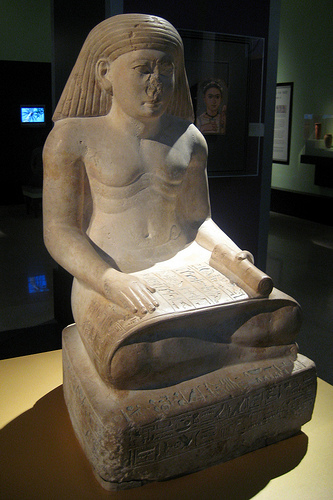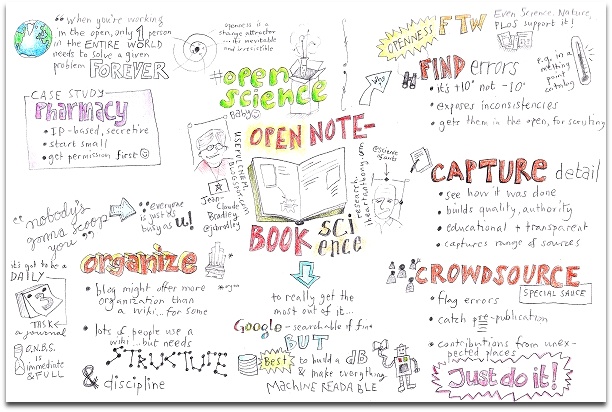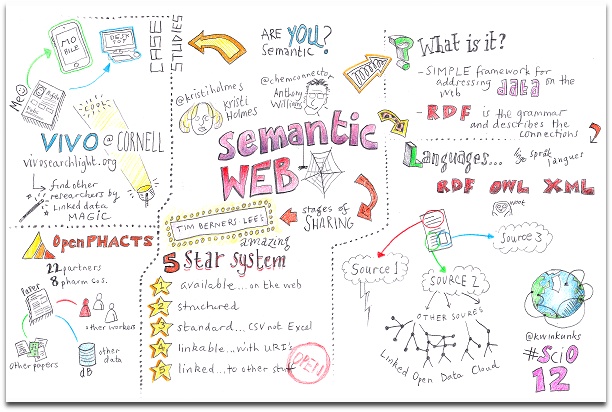Modern illuminations
 The illuminated manuscripts of the Middle Ages blended words and images, continuing traditions established by the Ancient Egyptians. Words and pictures go together: one without the other is a rather flat experience, like silent cinema, or eating fine food with a cold. This is why I like comic books so much.
The illuminated manuscripts of the Middle Ages blended words and images, continuing traditions established by the Ancient Egyptians. Words and pictures go together: one without the other is a rather flat experience, like silent cinema, or eating fine food with a cold. This is why I like comic books so much.
One of the opening sessions on Day 1 at the recent ScienceOnline conference was an hour with sketchnoter and überdoodler Perrin Ireland of Alphachimp Studio. She basically gave away all her secrets for purposeful scientific doodling. Tips like building a canon of fonts, practising icons and dividing lines, and honing an eye for the deft use of colour.
The result... well, I had a lot of fun scribing talks. Two of them I managed to get to a point we might call al dente, or maybe half baked. The first from a session on open notebook science, something that interests me quite a bit:
If it looks like you have to really listen and concentrate to produce one of these, that's because you do. I did miss bits, though, as I fretted over important things like what kind of robot to draw. And you might have noticed that I can't draw people. Yeah, I noticed that too. It didn't stop me adding them to the next one, from a session on the semantic web:
I'm not alone in my happiness at finding this sketchy new world. Perrin has given her perspective, and Michele Arduengo has written a lovely post about learning to draw science, and you can see many of the other efforts in this awesome Flickr gallery—the scratchings of amateurs like me sit half-convincingly alongside the professional pieces, and together I think they're rather wonderful.
Amenhotep image from Flickr user wallyg, licensed BY-NC-ND. All Flickr slideshow images are copyright of their respective creators, and may be subject to restrictions. All my work is licensed CC-BY.

